The AMD Radeon VII Review: An Unexpected Shot At The High-End
by Nate Oh on February 7, 2019 9:00 AM ESTCompute Performance
Shifting gears, we'll look at the compute aspects of the Radeon VII. Though it is fundamentally similar to first generation Vega, there has been an emphasis on improved compute for Vega 20, and we may see it here.
Beginning with CompuBench 2.0, the latest iteration of Kishonti's GPU compute benchmark suite offers a wide array of different practical compute workloads, and we’ve decided to focus on level set segmentation, optical flow modeling, and N-Body physics simulations.
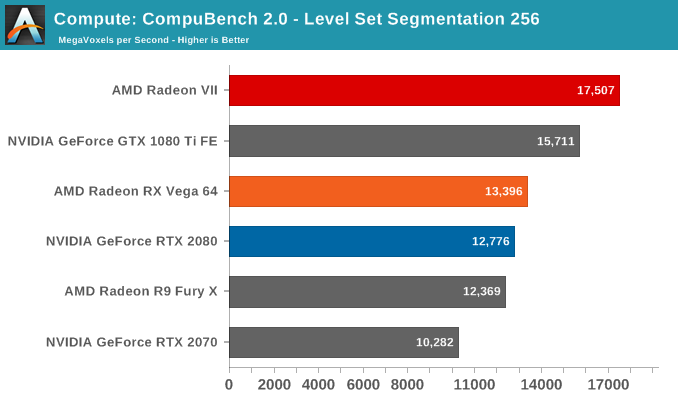
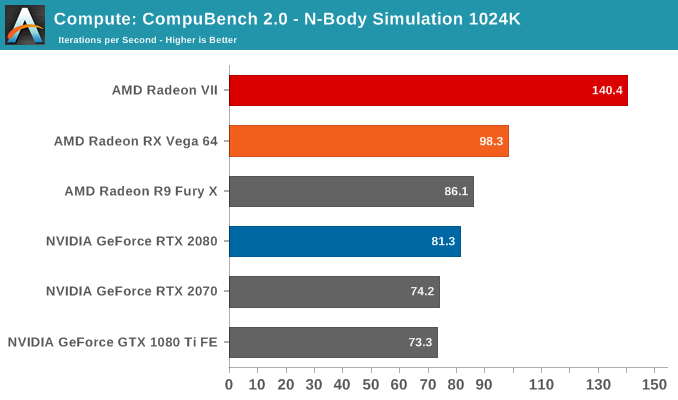
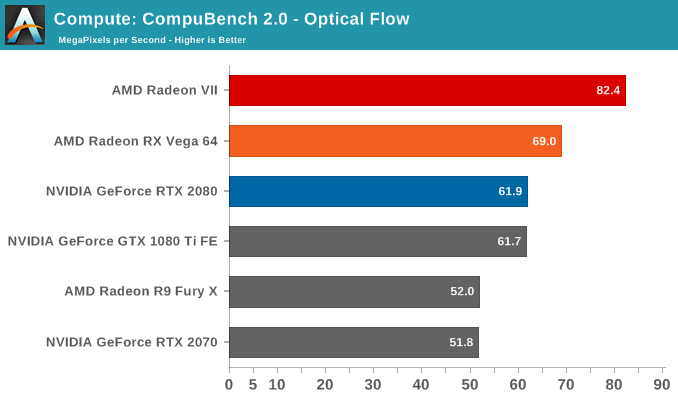
Moving on, we'll also look at single precision floating point performance with FAHBench, the official Folding @ Home benchmark. Folding @ Home is the popular Stanford-backed research and distributed computing initiative that has work distributed to millions of volunteer computers over the internet, each of which is responsible for a tiny slice of a protein folding simulation. FAHBench can test both single precision and double precision floating point performance, with single precision being the most useful metric for most consumer cards due to their low double precision performance.
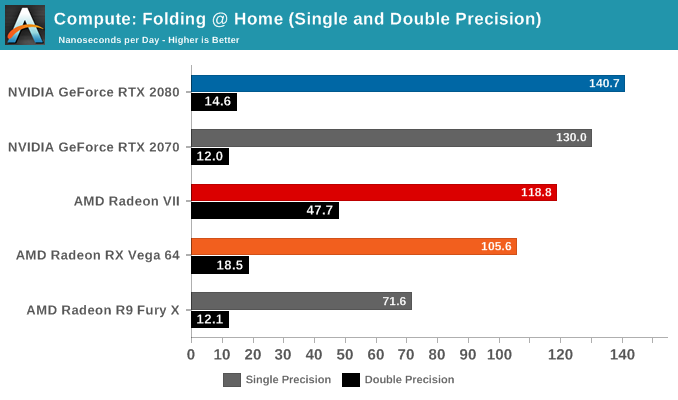
Next is Geekbench 4's GPU compute suite. A multi-faceted test suite, Geekbench 4 runs seven different GPU sub-tests, ranging from face detection to FFTs, and then averages out their scores via their geometric mean. As a result Geekbench 4 isn't testing any one workload, but rather is an average of many different basic workloads.
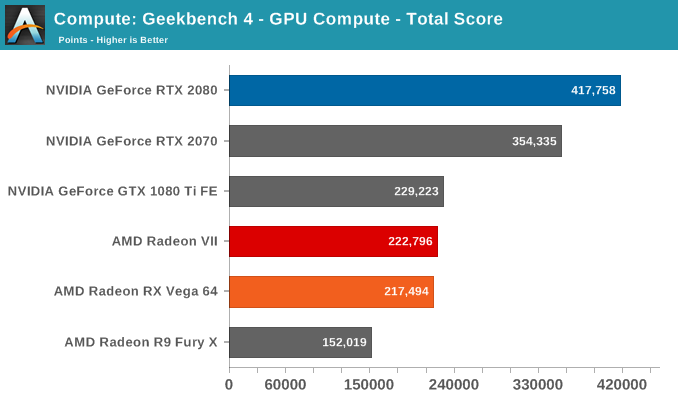
Lastly, we have SiSoftware Sandra, with general compute benchmarks at different precisions.
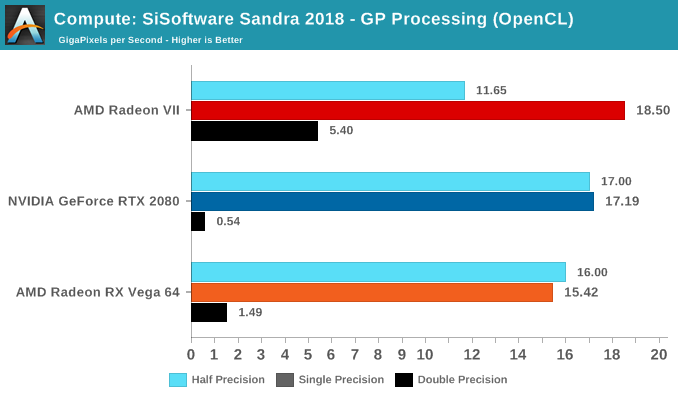
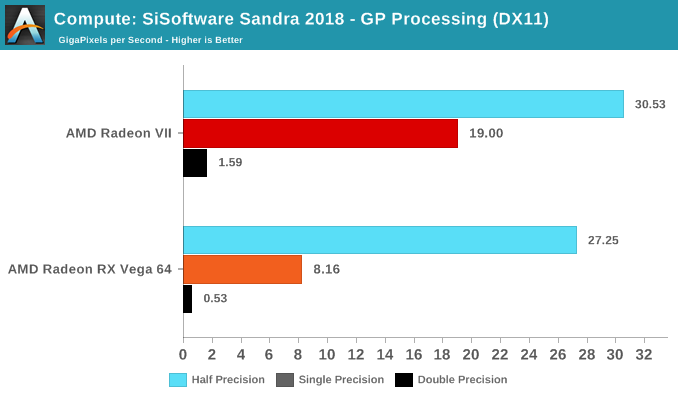
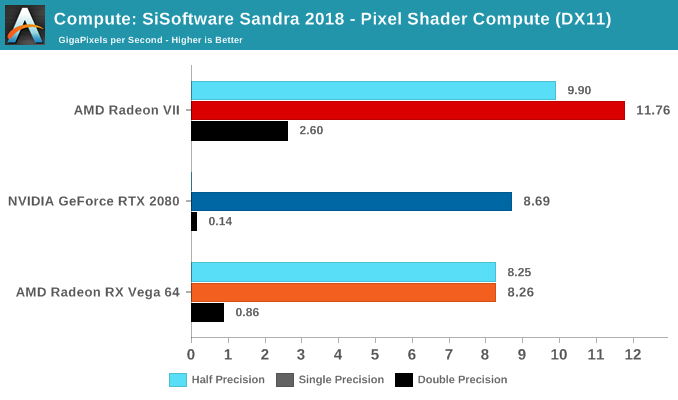










289 Comments
View All Comments
i4mt3hwin - Thursday, February 7, 2019 - link
So FP64 is 1:4 and not 1:8 or 1:2 as previously known?tipoo - Thursday, February 7, 2019 - link
Yep, looks like they changed the cap in vBIOS based on feedback.Which also means they could have uncapped it, but it's still cool that they did that.
Ganimoth - Thursday, February 7, 2019 - link
Does that mean it could be potentially unlocked by some bios mod?tipoo - Friday, February 8, 2019 - link
I hope so!Hul8 - Thursday, February 7, 2019 - link
I don't think it was ever reported or assumed to be 1/2 - that best possible ratio is only for the pro MI50 part. Early reports said 1/16.Ryan Smith - Thursday, February 7, 2019 - link
For what it's worth, when we first asked AMD about it back at CES, FP64 performance wasn't among the features they were even throttling/holding back on. So for a time, 1/2 was on the table.GreenReaper - Thursday, February 7, 2019 - link
So it was *your* fault! ;-pBigMamaInHouse - Thursday, February 7, 2019 - link
Asrock just posted vBios: is this with the FP 1:4 or newer?https://www.asrock.com/Graphics-Card/AMD/Phantom%2...
Ryan Smith - Thursday, February 7, 2019 - link
We're not currently aware of any Radeon VII cards shipping with anything other than 1/4 rate FP64.BigMamaInHouse - Friday, February 8, 2019 - link
So maybe it's new bios with some fixes?Did you tried it since all cards are the same reference design?